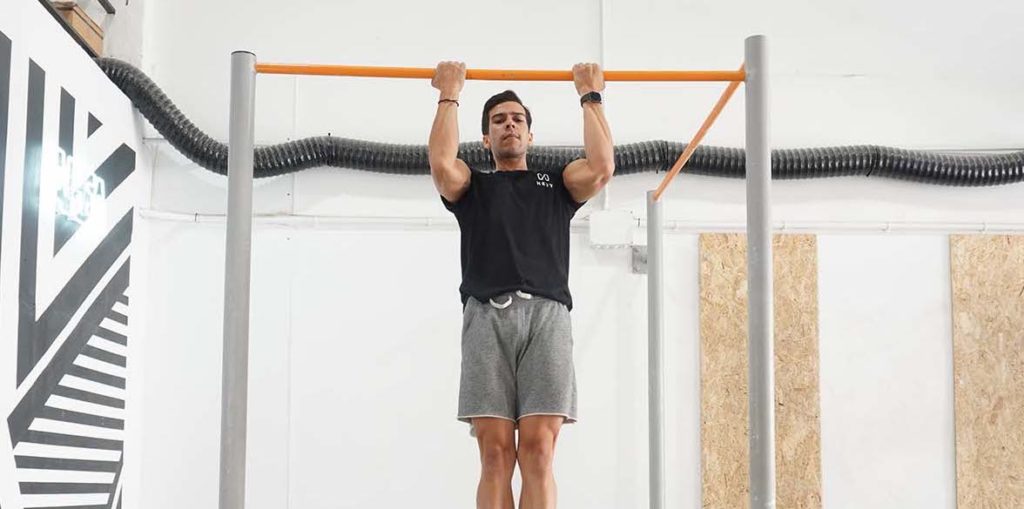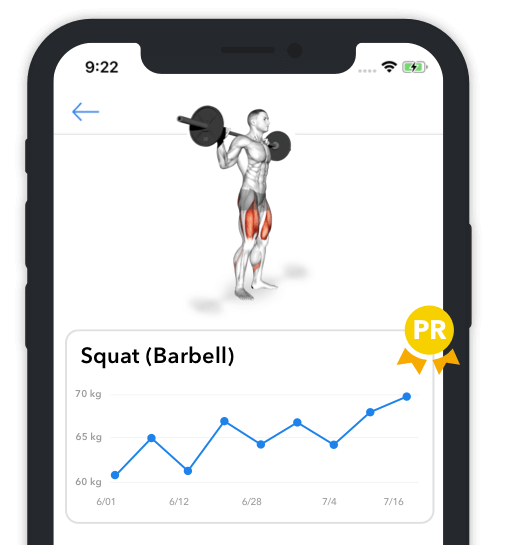The Dead Hang is an Underrated Exercise with Many Benefits
If you’ve ever felt like a minute isn’t much time, you should try dead hanging from a pull-up bar and check that theory. Seemingly simple (easy, even), the dead hang is one of the most underrated and challenging exercises with fantastic benefits.
The most apparent dead hang benefit is that you improve grip strength, which boosts your performance on many other exercises, particularly those you pull – rows, pull-ups, and similar.
Dead hangs also improve whole-body stability and balance because you have to stay still as you hang from the bar. Doing so requires tremendous effort from your entire body to pull off without swinging back and forth.
How to do a Dead Hang
- Stand underneath a pull-up bar and reach up.
- Grab the bar with an even overhand grip and have your hands slightly wider than shoulder level.
- Grip the barbell well and envelop it with your thumbs for extra support while hanging.
- Depending on the bar’s height, you will probably have to bend your knees off the ground while hanging.
- As you begin to hang, relax your shoulders and allow them to travel up toward your shoulders.
- When you relax your shoulders, think about maintaining a neutral spine; don’t arch your back by keeping your chest out.
- Keep your abs and glutes engaged to keep you from swinging back and forth. It will probably take you some time before you can hang motionless, so don’t worry too much about it.
- Maintain a deep and regular breathing pattern. Holding your air in will force you to let go of the barbell well before your grip gives out.
- Hang for as long as you can, let go, and take a breath.
If you find that the pull-up bar is too high, step on something or jump up and grab it to get into position.
What muscles does the dead hang activate?
The dead hang is a fantastic exercise precisely because it trains your entire body in one way or another. Most notably, the passive hang trains your forearms and improves your grip strength since you have to support your body weight by holding on.

Dead hangs are also helpful for your back, particularly the latissimus dorsi. By raising your hand over your head and holding on, you lengthen your lats, which produces an intense stretch. Even though dead hangs don’t lead to lat contraction (shortening), the stretch itself can cause a growth stimulus.
Hanging from a bar is also beneficial for your core musculature, which has to work hard to keep you still and prevent you from swinging back and forth. Specifically, dead hangs train your abs, obliques, erector spinae, and gluteus maximus.
How to progress from a dead hang into pull-ups?
If you’ve ever done dead hangs, you’ve probably thought, “There is no way I can pull myself up from this position.” As with most things, you can do it, so long as you take it one step at a time.
There are many ways to work up to a pull-up, but perhaps the best option is to take advantage of the eccentric position of the exercise. In other words, you need to lower yourself as slowly as you can, which will build strength in the correct muscles and eventually allow you to pull up successfully.
For example, you can grab a bar and jump to the top of the pull-up repetition. Then fight gravity on your way down and allow your elbows to extend as slowly as possible. You should be able to do a pull-up by the time you lower yourself for at least 45 to 50 seconds.
Variations and Modifications of the Dead Hang
1. Underhand Dead Hang
Instead of grabbing the bar with your palms facing forward, rotate your wrists 180 degrees and hang with your hands facing back.
2. Neutral-Grip Dead Hang
To do the neutral-grip dead hang, you have to grab onto a bar with your palms facing one another.
3. Weighted Dead Hang
If you’re looking to challenge yourself, weighted dead hangs are a great option. You can do the weighted version by:
- Putting a weight vest on yourself
- Holding a dumbbell between your feet
- Using a dip belt that lets you attach extra weight to yourself
4. Dead Hang On Gymnastic Rings
If hanging from a bar feels too easy, grab a pair of gymnastic rings and try again. The stability requirements will skyrocket and make the ‘simple’ hang much more challenging.
Mistakes to Avoid
A common mistake to watch out for when doing dead hangs is keeping tension in your lats. Thanks to all the back exercises we do, engaging our lats becomes a habit, and we lose the ability to relax. But dead hangs are about relaxing your entire body, allowing your lats to stretch and shoulders to travel up.
Another mistake to watch out for when doing dead hangs is keeping your elbows bent. The goal with dead hangs is to straighten your arms fully and keep them that way. Often, people new to the movement struggle to hang still and instead swing back and forth. Doing so is not necessarily the worst thing for you but do your best to hang perfectly still for the duration of the movement.
Keeping your breath in is also a mistake, which is typical for people new to the exercise. Regular breathing is vital for optimizing performance and allowing your body to produce energy with oxygen. Holding your breath makes any activity unnecessarily difficult and leaves you winded.
Similar Exercises to the Dead Hang
Static Holds
The static hold is an exercise where you grab onto a weight and hold it for as long as possible. You can grab a pair of heavy dumbbells, a loaded barbell, and more. Like dead hangs, static holds build grip strength and develop your forearms, shoulders, back, and core. The only difference is, that you’re using an external weight for resistance.
Pull-Up

Pull-ups are one of the best bodyweight movements you can do to improve core stability and build your back. As it happens, pull-ups are also similar to dead hangs in many ways. In both cases, you’re holding onto a bar and using your body for resistance. The primary difference is, that dead hangs are a static movement, whereas pull-ups have you actively engage your back and arms to pull yourself and go back down.
Scapular Pull Ups
Scapular pull ups are the same as dead hangs, but with one difference. Instead of hanging passively, you actively arch your back and release it multiple times. Scapular retractions help improve back engagement and teach you to activate your lats for pulling movements like pull-ups and rows.

